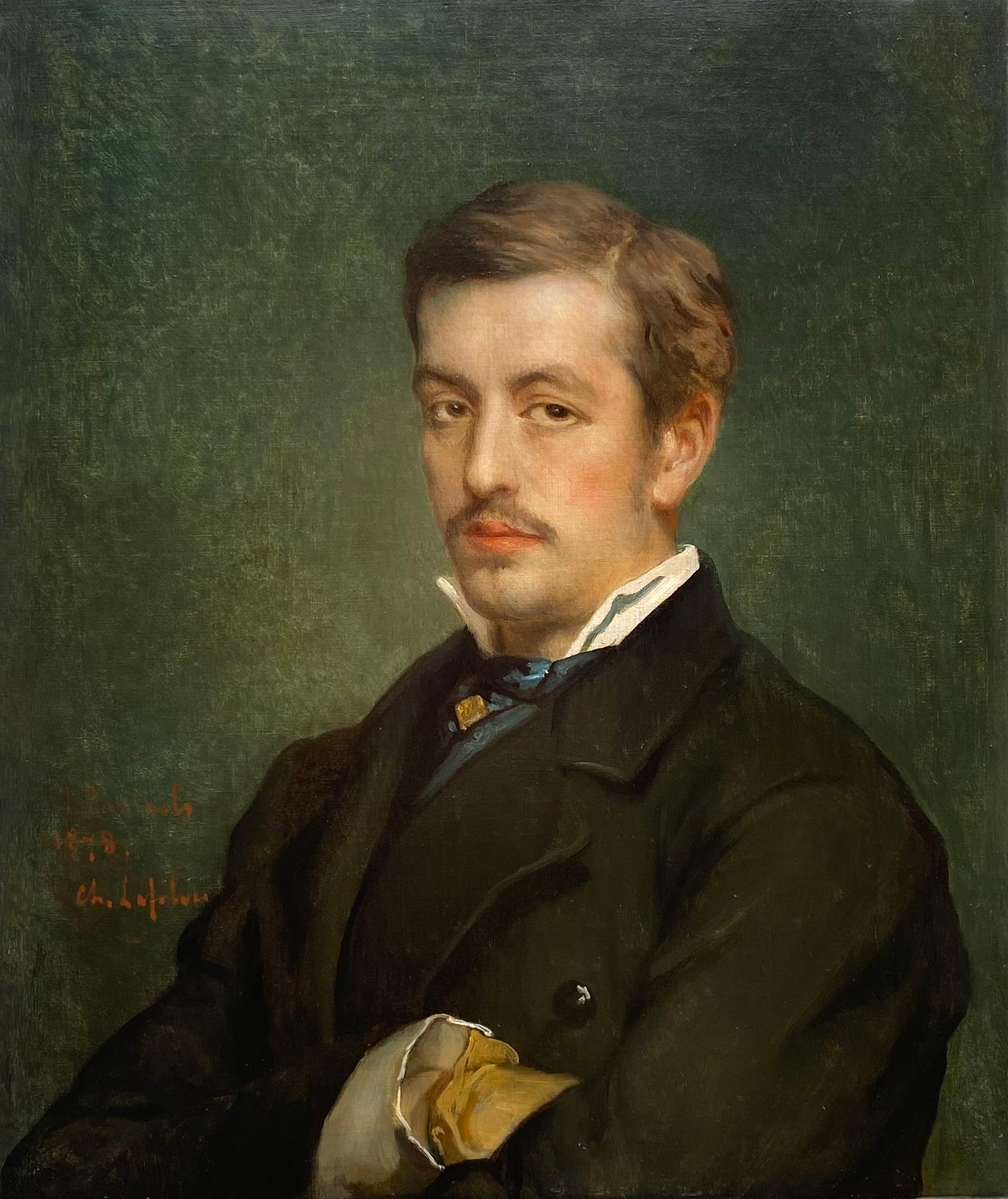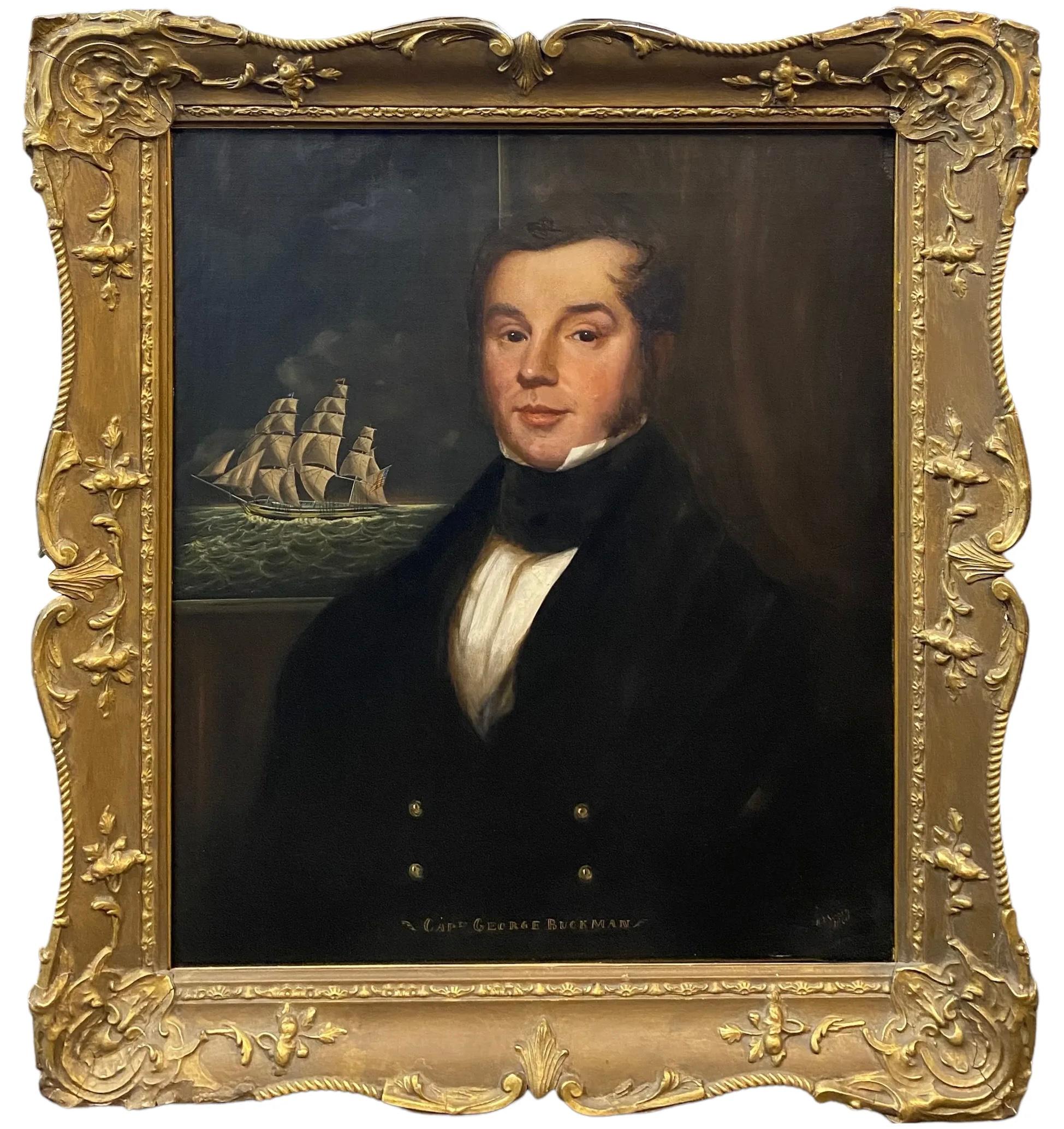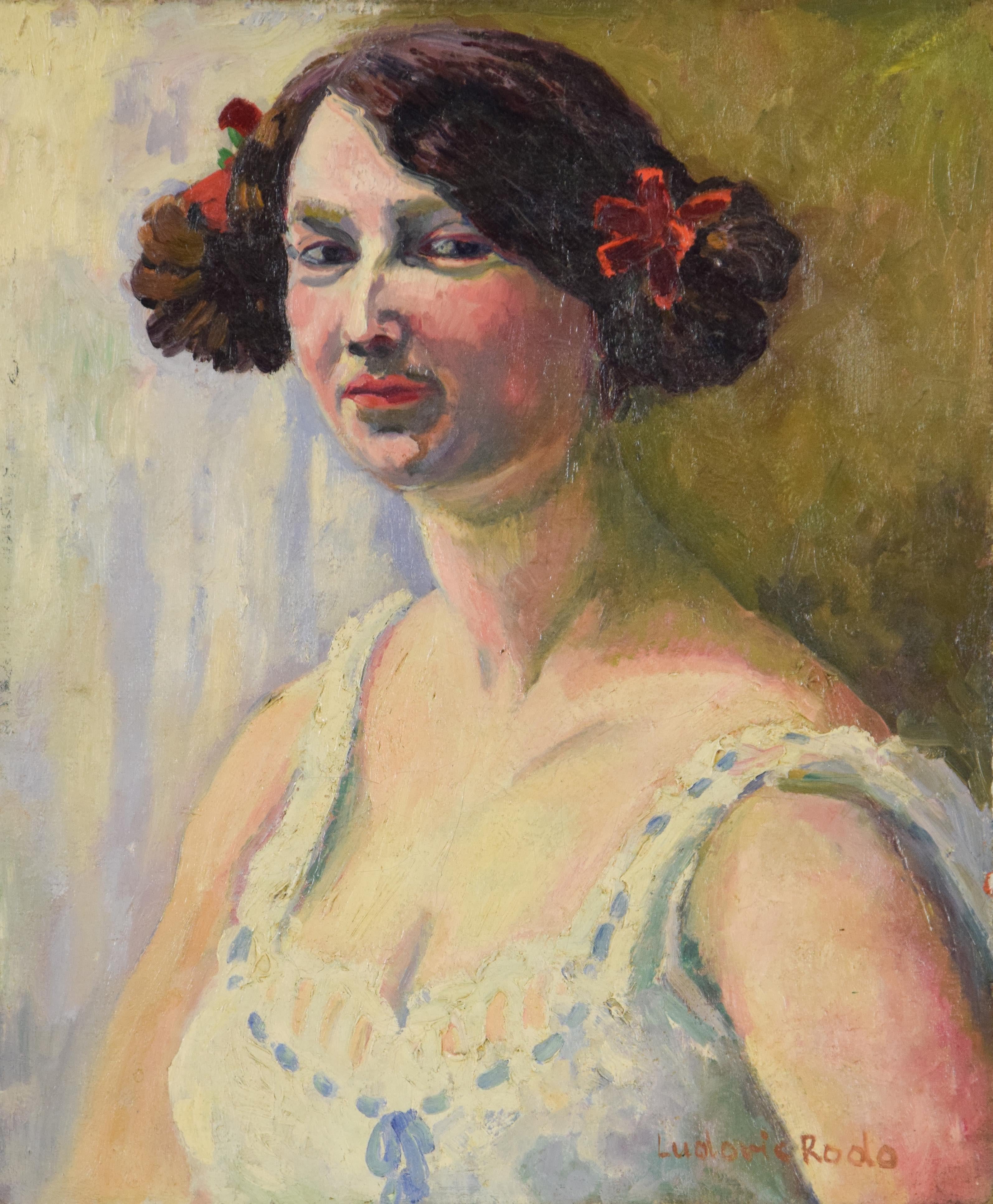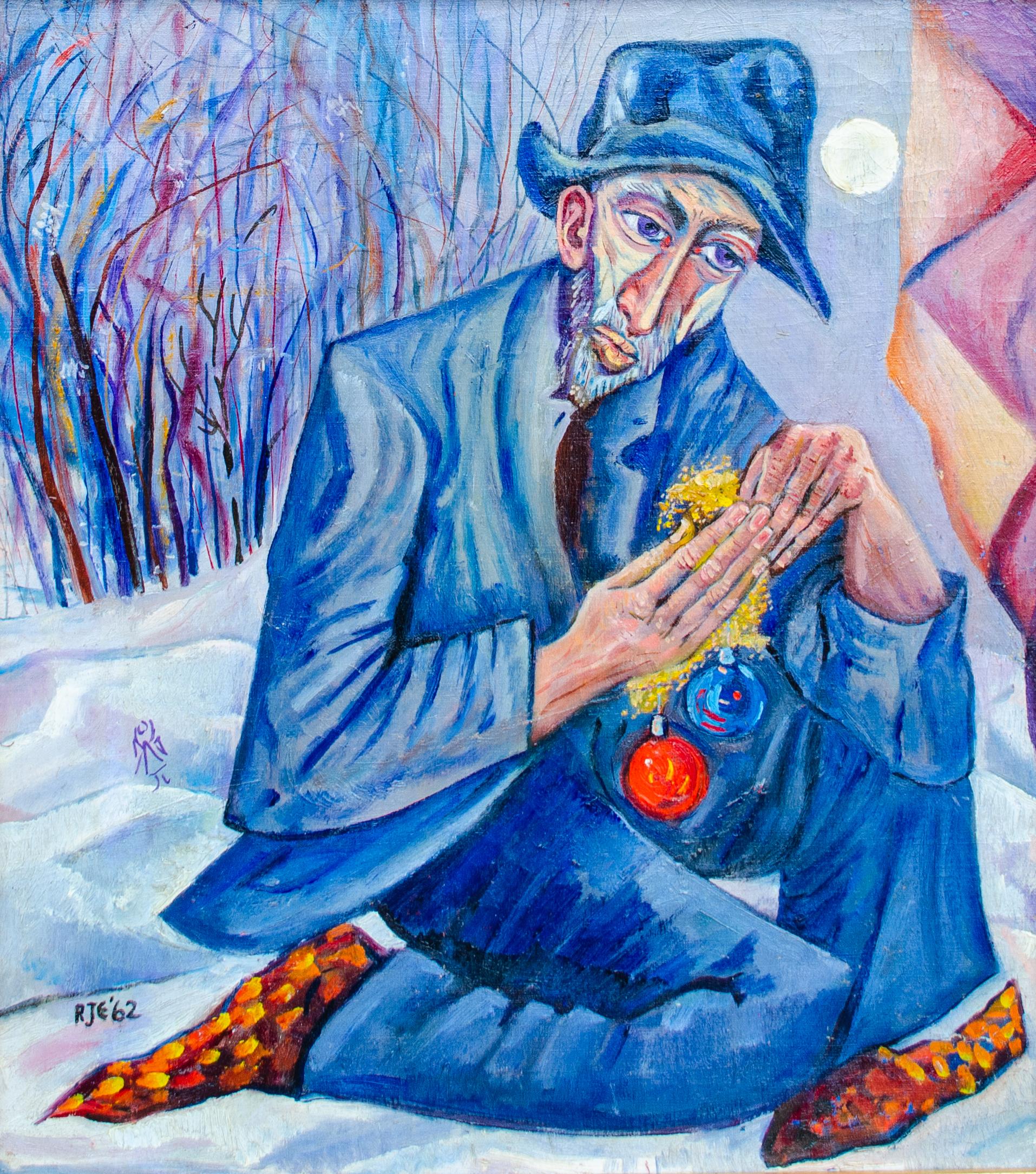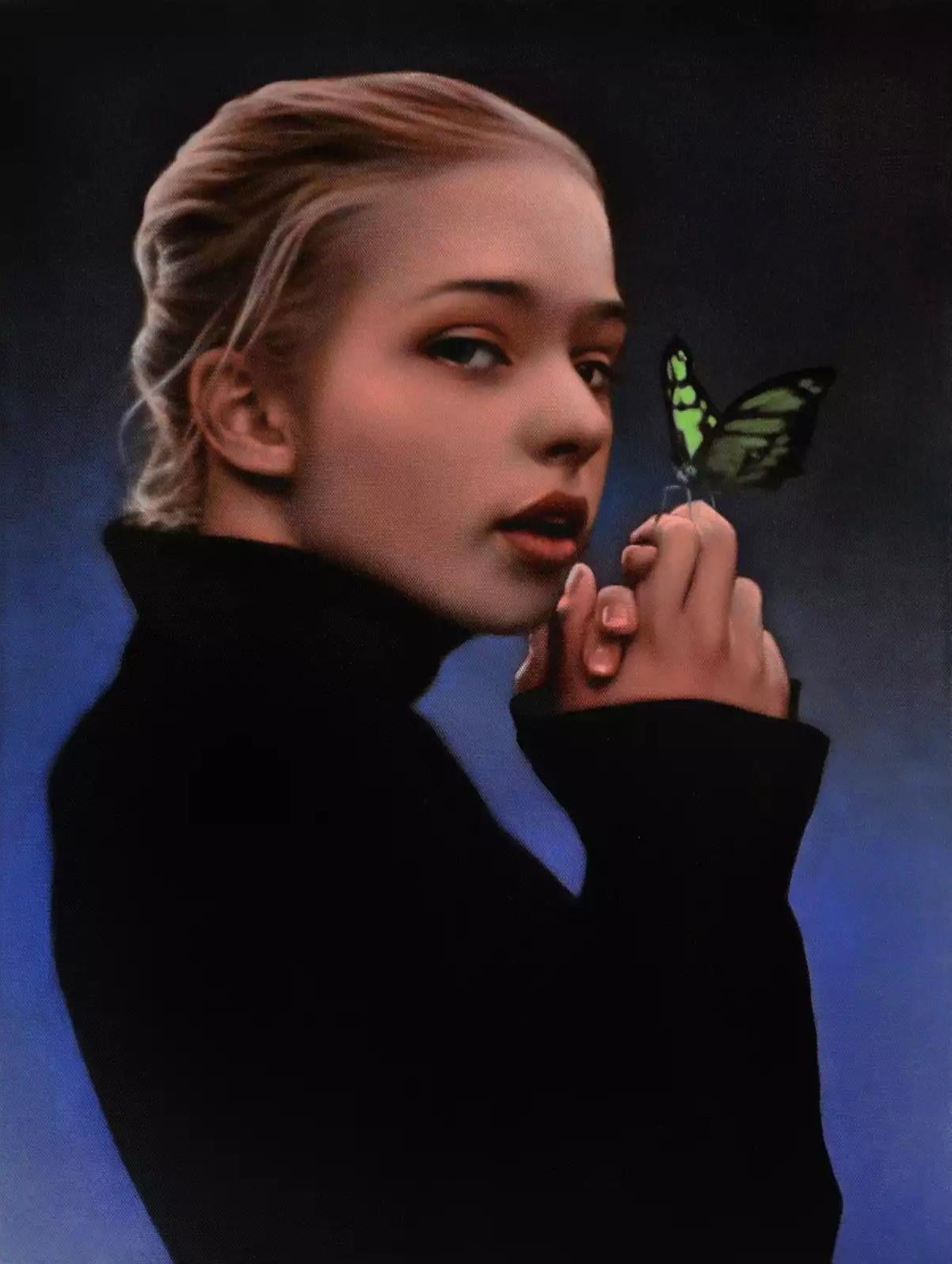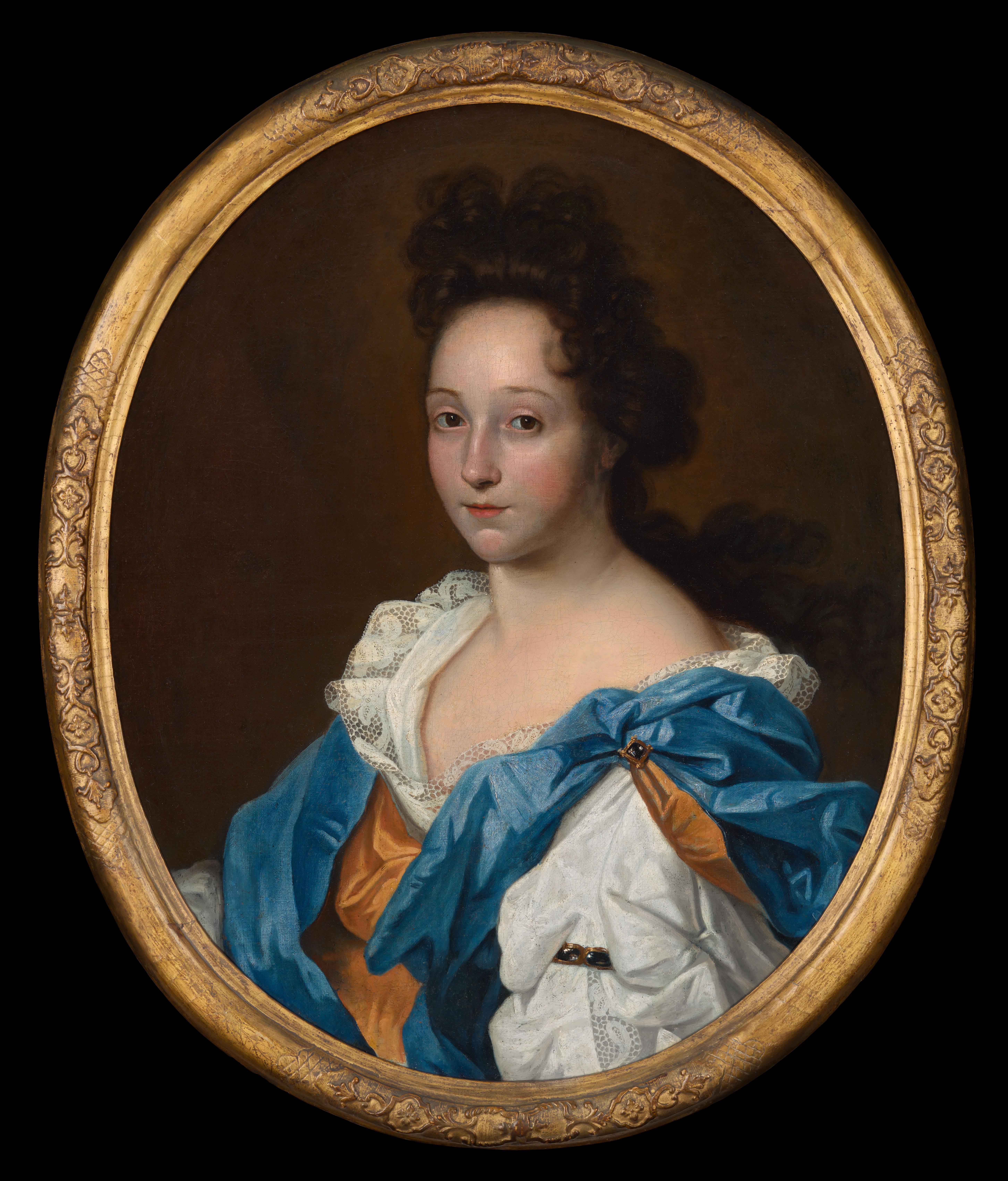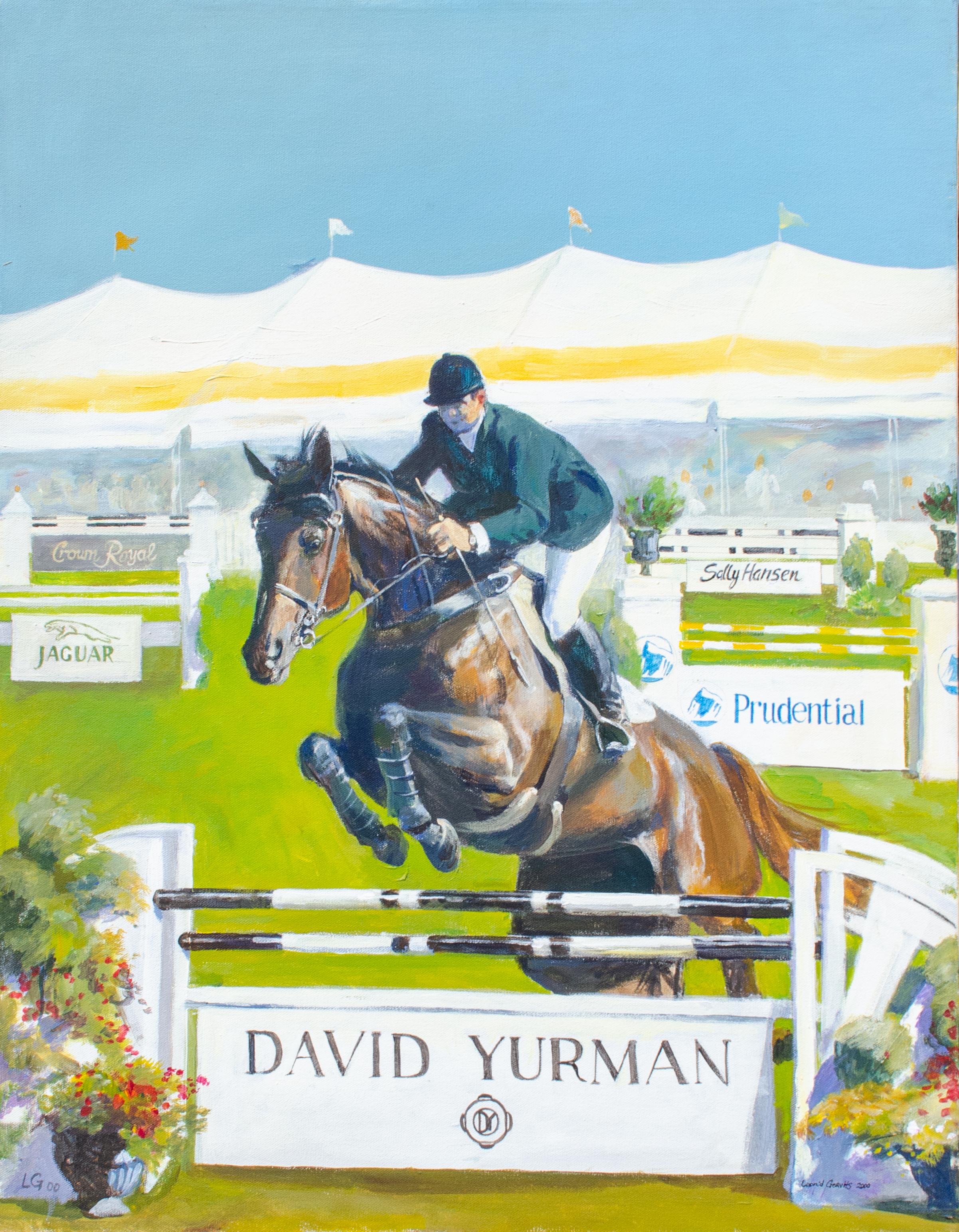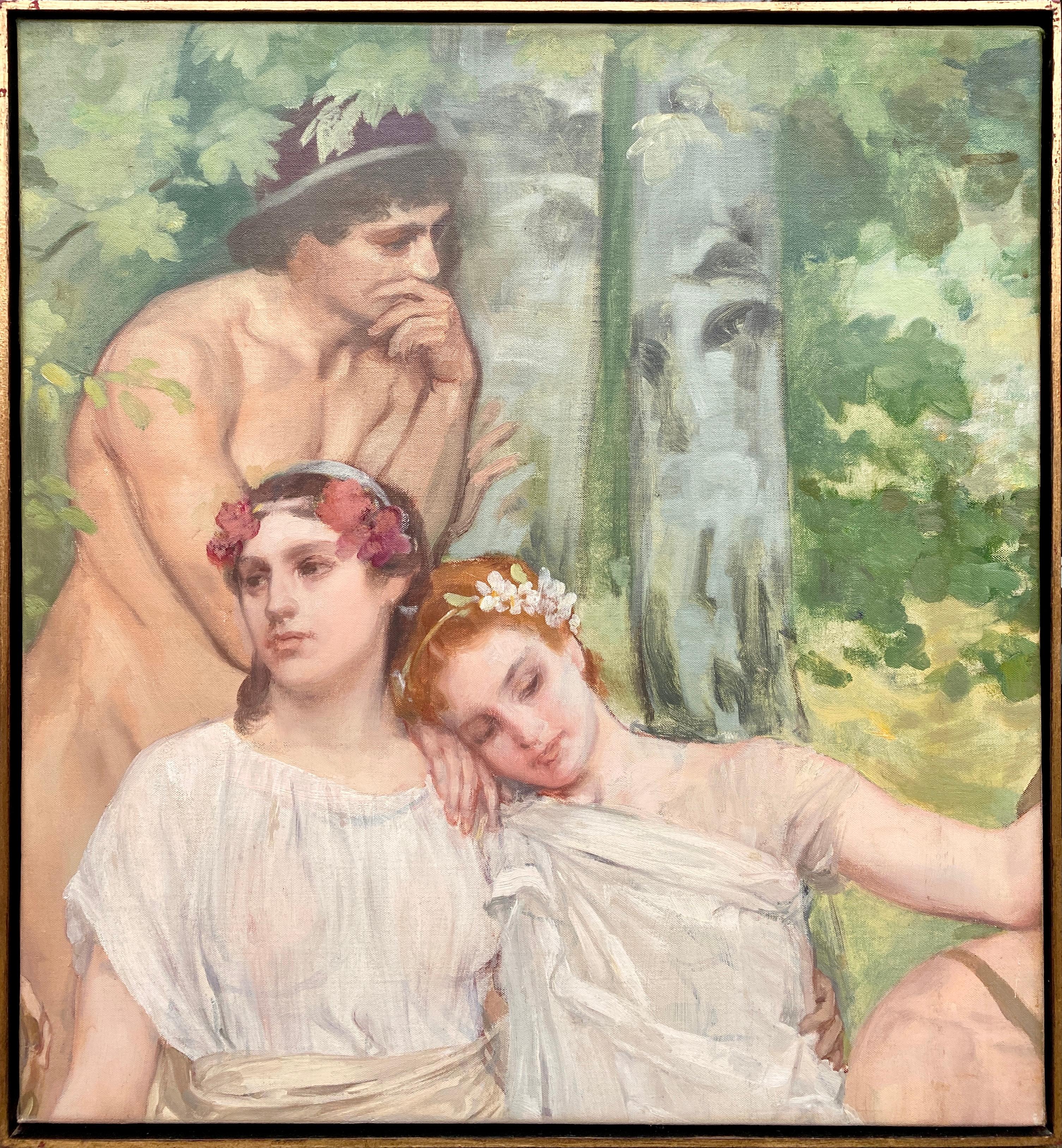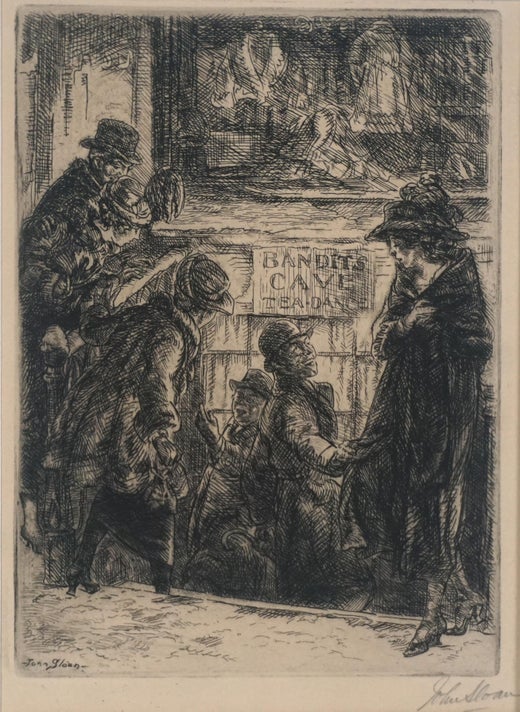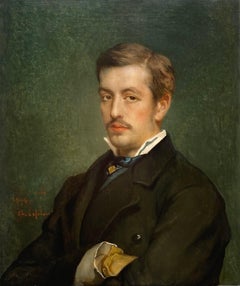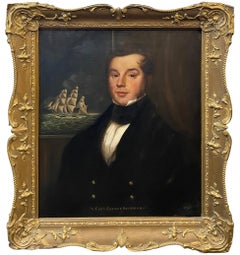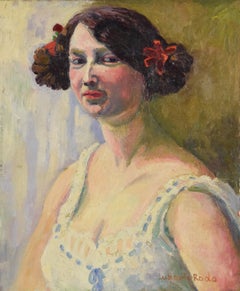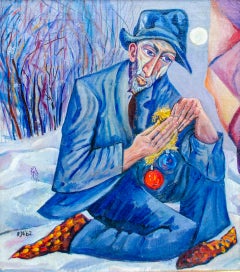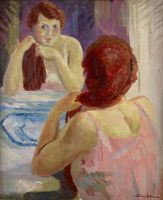
Girl at Mirror (Miss Hart)
1 of 4
John French SloanGirl at Mirror (Miss Hart)1915
1915
About the Item
- Creator:John French Sloan (1871-1951, American)
- Creation Year:1915
- Dimensions:Height: 24 in (60.96 cm)Width: 20 in (50.8 cm)
- Medium:
- Condition:
- Gallery Location:New York, NY
- Reference Number:1stDibs: G130513771230
John French Sloan
Sloan, came to New York in 1904 and worked for some time as a freelance illustrator. With Robert Henri, he organized an exhibition of a group of urban realist painters, known as "The Eight" or the "Ashcan School," who challenged traditional notions of art. Having moved to the Village in 1912, Sloan lived with his wife Dolly at 240 West 4th Street and at 88 Washington Place.
Authenticity Guarantee
In the unlikely event there’s an issue with an item’s authenticity, contact us within 1 year for a full refund. DetailsMoney-Back Guarantee
If your item is not as described, is damaged in transit, or does not arrive, contact us within 7 days for a full refund. Details24-Hour Cancellation
You have a 24-hour grace period in which to reconsider your purchase, with no questions asked.Vetted Professional Sellers
Our world-class sellers must adhere to strict standards for service and quality, maintaining the integrity of our listings.Price-Match Guarantee
If you find that a seller listed the same item for a lower price elsewhere, we’ll match it.Trusted Global Delivery
Our best-in-class carrier network provides specialized shipping options worldwide, including custom delivery.You May Also Like
'Portrait of a Man in a Black Coat' by Jean-François Portaels (1818 – 1895)
Located in Knokke, BE
Jean-François Portaels
1818 – Brussels – 1895
Belgian Painter
'Portrait of a Man in a Black Coat'
Signature: signed middle lower left, dated 1878 and named ‘J. Portaels 1878. Ch. Lefebvre'
Medium: oil on canvas
Dimensions: image size 60,5 x 50,5 cm
Biography: Jean-François Portaels, also known as Jan Portaels, was a versatile Belgian painter born on April 3, 1818, in Vilvoorde and passed away on February 8, 1895, in Schaerbeek. He was celebrated for his genre scenes, biblical stories, landscapes, portraits, and Orientalist subjects. As a teacher and director of the Academy of Fine Arts of Ghent and the Académie Royale des Beaux-Arts in Brussels, Portaels significantly impacted Belgian art, becoming a pivotal figure in the Belgian Orientalist school. His works were known for their ‘everyday elegance and feminine grace,’ and he played a crucial role in influencing the next generation of Belgian artists, including notable figures like Théo van Rysselberghe.
Portaels was the son of a wealthy brewer who also served as Vilvoorde’s mayor. Showing an early passion for drawing, he was sent to the Académie Royale des Beaux-Arts in Brussels in 1836, where he studied under François-Joseph Navez, a former student of Jacques-Louis David. Navez invited him to his studio, which was renowned at the time, allowing Portaels to refine his skills alongside other talented students like Charles de Groux and Joseph Stallaert.
In 1841, Portaels moved to Paris, enrolling at the Ecole des Beaux-Arts and studying under Paul Delaroche. He became influenced by the emerging Orientalist movement, which was gaining traction in Paris. In 1842, he won the Grand Prix de Rome, which funded his travels across Italy and other regions, including Morocco, Algeria, Egypt, Lebanon, Judea, Spain, Hungary, and Norway. These journeys profoundly influenced his artistic vision, particularly his Orientalist works.
Upon his return to Belgium in 1847, Portaels was appointed Director of the academy in Ghent. In 1849, he married Marie Hélène Navez, the daughter of his first teacher. Despite being offered the directorship of the Brussels Academy, he initially declined, opting to preserve his independence. He later accepted a teaching position at the Academy and eventually became its director in 1878, succeeding Eugène Simonis.
Portaels was known for his broad range of artistic talents, including history painting, portraiture, and genre art. He was particularly recognized for his Orientalist depictions, often portraying the ‘Oriental woman’ with distinctive features like arched eyebrows and almond-shaped eyes. His style, marked by charm and elegance, distinguished him from the dominant artistic movements of Classicism and Romanticism.
He was a pioneer in monumental art in Belgium, working with Jean Baptiste van Eycken to introduce fresco techniques like water glass painting...
Category
Late 19th Century Realist Portrait Paintings
Materials
Canvas, Oil
Portrait of Ship Captain George Buckman
Located in Milford, NH
A fine oil on canvas portrait of Captain George Buckman, identified lower center, indiscernibly signed and dated 1860 lower right, with a tall ship with an American flag in the backg...
Category
1860s Portrait Paintings
Materials
Canvas, Oil
Portrait of a Woman by Ludovic-Rodo Pissarro - Portrait painting
By Ludovic-Rodo Pissarro
Located in London, GB
Portrait of a Woman by Ludovic-Rodo Pissarro (1878-1952)
Oil on canvas
55 x 46 cm (21 ⁵/₈ x 18 ¹/₈ inches)
Signed lower right, Ludovic Rodo
Executed circa 1906
This work of art is a...
Category
Early 1900s Fauvist Figurative Paintings
Materials
Oil, Canvas
Modern Surrealist Winter Painting by Richard Ericson
By Richard Ericson
Located in New York, NY
Richard Joseph Ericson (American, 1922-2010)
Untitled, 1962
Oil on canvas
18 x 16 in.
Framed: 20 x 18 in.
Signed lower left: RJE '62
Richard Joseph Ericson (b. October 22, 1922-d. November 21, 2010), born in Chicago, Illinois. Son of Claire (b. 1899) and Arthur Ericson (b. 1899). His father was an accountant for a food products company and the family moved to Mount Vernon, Westchester County, New York, when he was a young child.
Ericson, a twin, first began to draw at age five and took up painting in oils at age twelve. He studied at the Art Students League in New York City in 1941, where he received an honorable mention during the annual scholarship competition held that year. During this period he worked as a commercial artist.
After America's entry in World War II Ericson enlisted in the Army in 1942, where he served as a warrant officer. He saw service in North Africa, France, and Germany. While overseas, he did many drawings of the places in which he was stationed. He eventually found himself guarding Italian prisoners of war who had been captured in Sicily and southern Italy. While performing his duties during 1943 and 1944 he found time to paint several important, large scale portraits of the prisoners who were happy to pose for him. As the war concluded he was able to visit Holland to study.
After nearly three years overseas, Ericson returned to America and traveled back to his home town of Chicago where he furthered his studies at the Art Institute of Chicago.
He married in 1948 and moved his young family to Mexico, where he attended Mexico City College. He studied art and exhibited while living there, receiving his Master of Arts degree, cum laude, in 1953.
For a time after his return to the United States he taught art in Dutchess County, New York, where he and his wife built their own house by hand. Eventually the family, which would come to include seven sons, settled in Hicksville, Long Island, New York. Ericson joined the staff of Hicksville High School as the art teacher in 1962, a position he would hold until his retirement in 1983.
As a teacher, Ericson was open to all fields and styles of art, constantly experimenting and experiencing new forms and styles. He had started printmaking in the late 1940's and continued to work in this medium for many years, producing mezzotints, etchings, and wood block prints. He also continued to paint, creating portraits, scenes in southern Dutchess County, and Long Island landscapes - for which he would become well known.
Ericson grew to love the area in which he lived, and depicted it quite often in his paintings. He became enamored with the historic village of Cold Spring...
Category
1960s American Modern Portrait Paintings
Materials
Canvas, Oil
'The Hidden Language', by Michael Hlousek-Nagle, Oil on Canvas Painting
Located in Oklahoma City, OK
This 24 x 17 inch oil on canvas painting by British artist Michael Hlousek-Nagle, is titled ''The Hidden Language.' . The work depicts a portrait of a young female and a butterfly. It is a 1/2 length portrait, thus her lower half is not visible, only her lower chest and up, although it is not totally clear where her body is cut off by the composition, as she wears a black turtle neck...
Category
2010s Photorealist Portrait Paintings
Materials
Canvas, Oil
Florentine Expressions: A Portrait Series I (circa 1980s-90s)
Located in London, GB
"Florentine Expressions: A Portrait Series I", oil on canvas, mounted on board, Florentine School (circa 1980s-90s). This gallery has acquired a number of paintings through an interm...
Category
Late 20th Century Modern Abstract Paintings
Materials
Canvas, Oil, Board
Recently Viewed
View AllMore Ways To Browse
Hart Mirror
Pet Shop
Roy Lichtenstein Signed Original
Sculpture By Leonard
Silver Dollar
Tangle Sculpture
W H Davis
White Heron
Wild Mustang Photographs
Woodblock Kyoto
Wright J
Andy Warhol Skull
Black Steel Garden Sculptures
Blue Star Line
Book Mark Rothko
Chagall Lithograph Poster
Elvis Presley Signed
Generative Art
